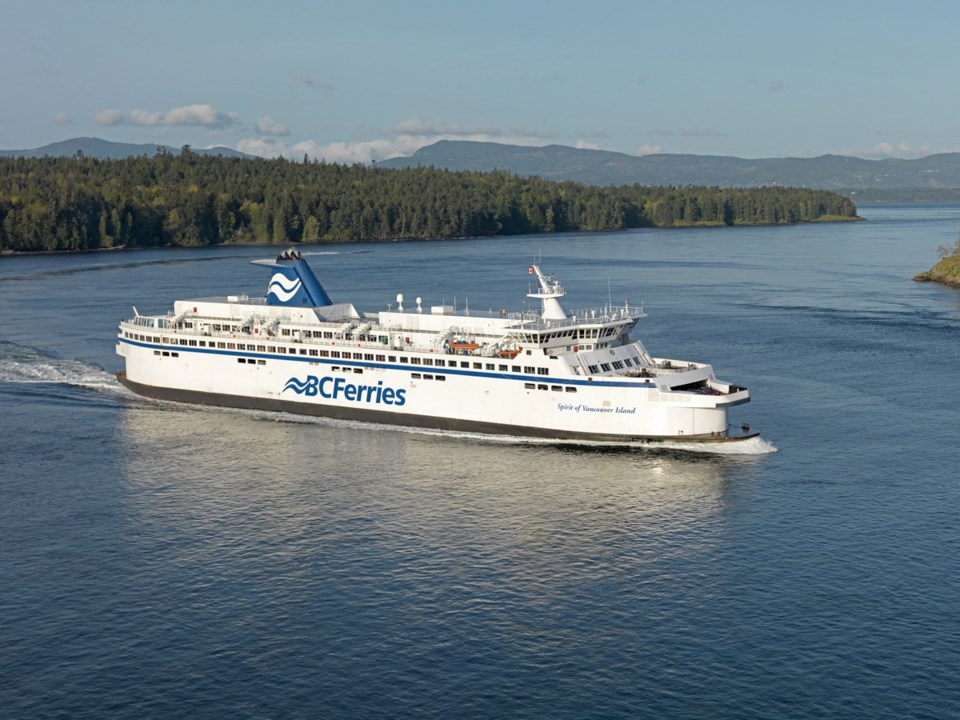A new dual-fuel system proposed for the two Spirit class ferries will eventually shave three per cent off fares fleet-wide from what they would have been otherwise thanks to anticipated annual savings of $9.2 million, says the president of B.C. Ferries.
Spirit of Vancouver Island and Spirit of British Columbia, the largest vessels in the fleet, would be converted to run on liquefied natural gas or diesel, with the aim of using mainly lower-cost LNG. The B.C. ferries commissoner has been asked to approve the plan.
A new low-friction underwater coating on the hull and modifications to the hull’s bow and stern are also planned to cut down on drag and further reduce fuel costs to the tune of $650,000 annually, Mike Corrigan, B.C. Ferries president and CEO, said Monday.
The conversions would be done during refits for the vessels. Spirit of Vancouver Island’s refit is scheduled for fall 2016 to spring 2017; Spirit of British Columbia’s refit is scheduled for fall 2017 to spring 2018.
The cost of the two refits is expected to exceed $100 million, including tens of millions for the fuel conversion, said Corrigan. If it receives approval, B.C. Ferries will seek bids late this year or in early 2015.
Plans call for carving out space on Deck 6 for new retail and beverage areas to bring in more income, Corrigan said.
Asked if other ferries will be converted to dual fuel, Corrigan said: “We are looking at more ships right now but we haven’t made any final decisions at this point.”
B.C. Ferries’ next fare increase will be 3.9 per cent in April 2015, after a four per cent increase this year.
What happens to fares after that hasn’t been established, but fuel cost savings will become a factor if the conversions are approved. “Those savings get spread across the entire company so everybody will see their fares being three per cent lower than they otherwise would be,” Corrigan said.
B.C. Ferries spent $126 million on fuel in the past fiscal year, with Spirit-class vessels using about 15 per cent. The two vessels, each with a capacity for 2,100 passengers and crew, are the largest users of fuel in the fleet. The new system is expected to cut their fuel costs in half on their route between Swartz Bay and Tsawwassen.
Three new intermediate-class ferries that have been ordered from a shipyard in Poland will also be equipped with dual-fuel systems. They are scheduled to be delivered in 2016 and 2017.
“Once the five vessels are in service, that’s about a $12 million per year savings, so it’s a very significant savings when you look at the size of our fuel bill,” Corrigan said.
The Spirit-class vessels, each 550 feet long, were built in North Vancouver and Victoria. They went into service in 1993 and 1994. In fiscal 2014, the two vessels carried 28 per cent of B.C. Ferries’ passengers.
After recouping the conversion cost, savings would start coming into effect, reaching three per cent within seven to eight years, Corrigan said.
Fares are a sensitive topic. A study for the Union of B.C. Municipalities said increases in the past decade have cost the provincial economy $2.3 billion. B.C. Transportation Minister Todd Stone said the report’s findings are unsubstantiated.



